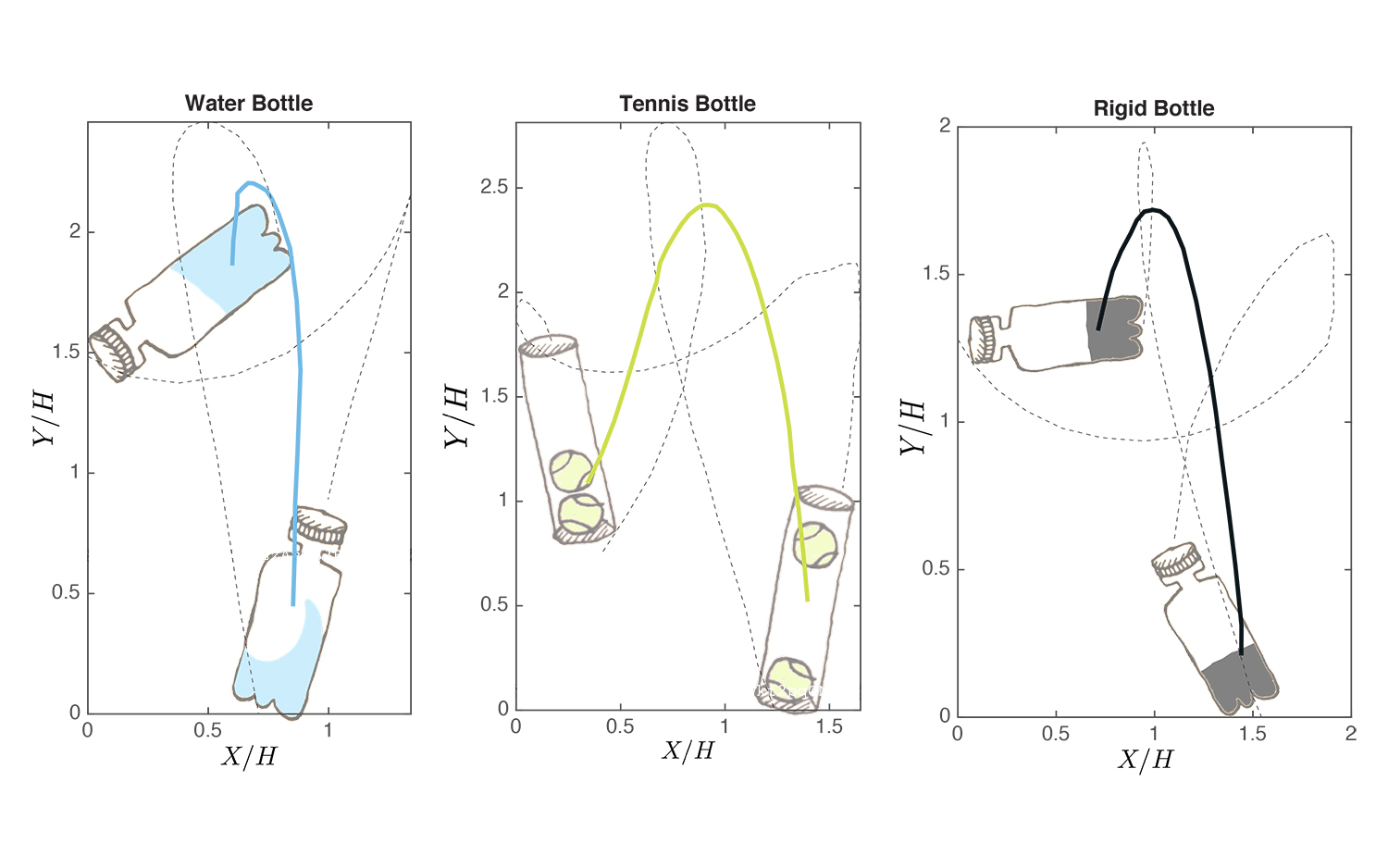Secrets of the Perfect Water-Bottle Flip Unlocked: Thanks, Physicists!

It was a craze that flooded the internet in 2016. People of all ages were flinging plastic bottles partly filled with water into the air, with a simple goal: tossing the bottle so it completed at least a single flip and landed upright.
This feat is much harder than it looks. But there's no need to flip out — bottle flipping just got a whole lot easier, thanks to a team of first-year physics students from the University of Twente in the Netherlands.
These researchers conducted a series of observations and trials, coming up with a formula that precisely lays out the conditions for a perfect water-bottle flip. [Twisted Physics: 7 Mind-Blowing Findings]
The secret lies in the water in the partly filled bottle. As the liquid sloshes around during the toss and flip, the water redistributes the mass of the bottle, the students reported Sept. 19 in the American Journal of Physics. Just the right amount of water in the bottle (it varies, depending on the container's size) can bring a perfect flip within reach in every toss, according to the study.
To understand the physics behind this experiment, think of figure skaters spinning in place; when they pull in their arms close to their bodies, they rotate much faster. During a bottle flip, as the water spreads out inside the bottle (like figure skaters stretching out their arms), the opposite happens — the rotation slows down, study co-author Mees Flapper told Live Science in an email.
"In physics, this is called conservation of angular momentum," Flapper said.
With the right amount of fluid to slow the bottle's spin, the container loses rotational speed and appears to pause at a horizontal position. The maneuver culminates in a descent that is nearly vertical, "followed by a smooth landing," the study authors reported.
Sign up for the Live Science daily newsletter now
Get the world’s most fascinating discoveries delivered straight to your inbox.

But liquid water is tricky to quantify in an equation. In addition to testing liquid-filled bottles, the students conducted trials using a cylinder holding tennis balls. These objects redistributed themselves in much the same way that water does.
"To our great surprise, the theoretical tennis-ball model could predict the path of the flipping water bottle very accurately," Flapper said. A video produced by the students and shared on YouTube shows the performance of the flipping bottles; whether the container held liquid or tennis balls, the ending was the same: a perfect, vertical landing.
The students found that the most-reliable flips came from bottles that were about 20 to 40 percent full. That conclusion is supported by anecdotal reports from internet bottle-flippers, who claimed peak performance from water bottles that were one-quarter to one-third full, according to the study.
While the main goal of the project was to practice a real-world application of physics theory, the study authors also learned the importance of creative thinking while in the pursuit of scientific knowledge, Flapper said in the email.
"You shouldn't be afraid to think outside the box — even in an abstract, theoretical field [such] as physics," he said.
Original article on Live Science.

Mindy Weisberger is an editor at Scholastic and a former Live Science channel editor and senior writer. She has reported on general science, covering climate change, paleontology, biology and space. Mindy studied film at Columbia University; prior to Live Science she produced, wrote and directed media for the American Museum of Natural History in New York City. Her videos about dinosaurs, astrophysics, biodiversity and evolution appear in museums and science centers worldwide, earning awards such as the CINE Golden Eagle and the Communicator Award of Excellence. Her writing has also appeared in Scientific American, The Washington Post and How It Works Magazine. Her book "Rise of the Zombie Bugs: The Surprising Science of Parasitic Mind Control" will be published in spring 2025 by Johns Hopkins University Press.









